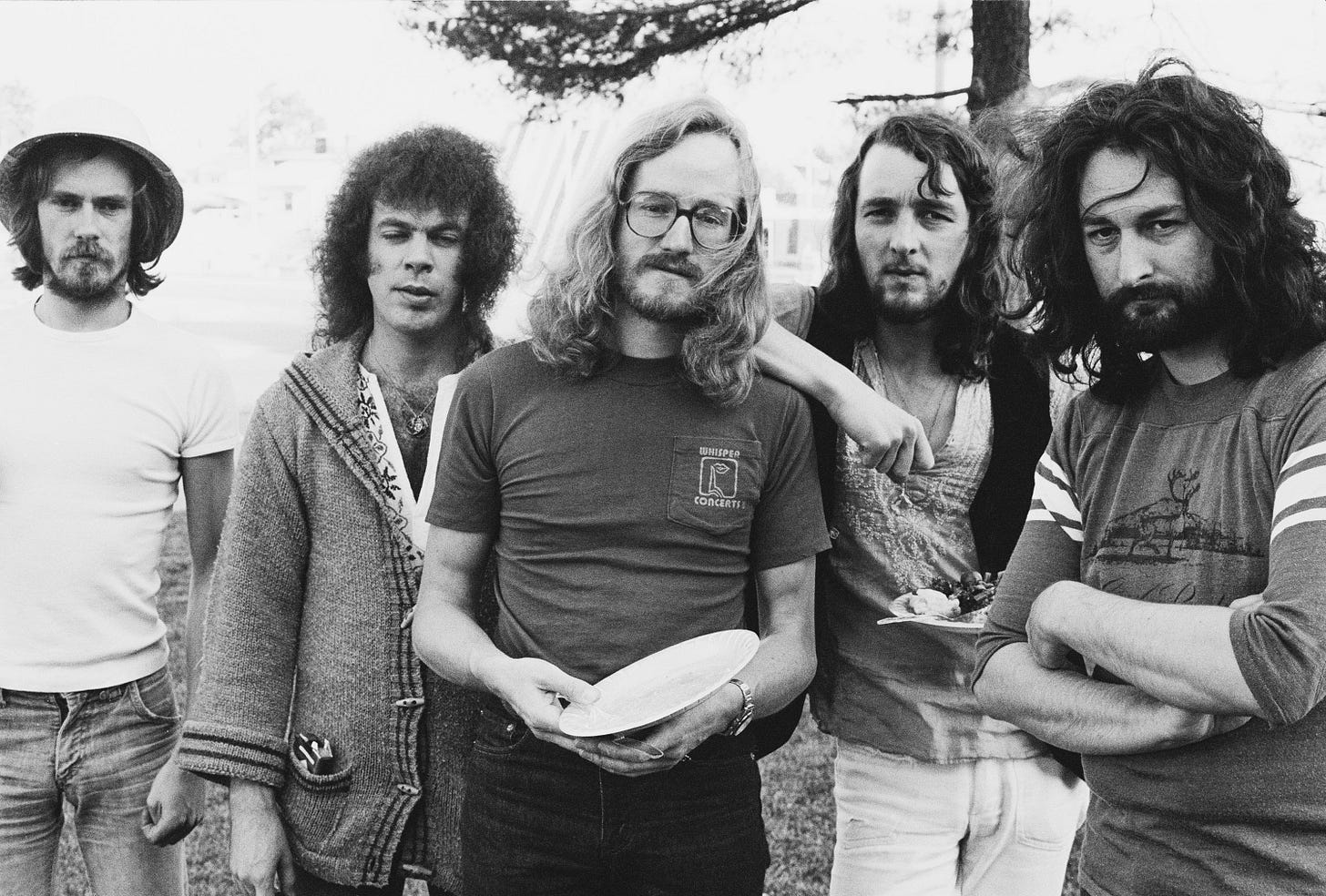Despite two decades of researching curiosity, there are still moments when a study takes a wrecking ball to my cherished convictions. I just had such a moment. But first…
Artists Impeding Their Art
Let a tortured singer from my teenage years speak about how the modern world impedes curiosity. Trent Reznor of Nine Inch Nails knows how to capture pain sonically.
His greatest track1 still sends a surge of goosebumps rippling across my skin. It's as if time bows to its beauty.
In an interview, Trent Reznor spoke about how the modern world makes it easy for the artist to interfere with the emotional resonance of art. He refers to this as “the demystification of artists.” A cost is incurred when artists reveal so much about their personal lives that there is insufficient room for consumers to interpret the work themselves.
Growing up, I didn’t know what Pink Floyd looked like and I didn’t need to know. In my mind, they looked like fucking wizards, man. I remember seeing a picture of Supertramp — and I loved Breakfast in America — and I was like, What the fuck?
Forget just photos: I didn’t know anything about them. Something in me needed the people making the music I loved to seem larger in life. I needed heroes. David Bowie was a fucking alien, you know? As it happens, he was a fucking alien. I was lucky enough to be friends with him and he was even cooler than I’d thought. But demystification is a real problem. There’ve been people whose music I can’t like anymore because I’ve seen them bitching on Twitter about a waiter like a fucking asshole.
I’ll give you a good counterexample: I appreciate what Radiohead has been doing the last few years. You’re not saturated with stories about them. They’re not in the press constantly talking about stuff. They create an aura that makes you more interested in what they’re doing. That’s a good position to be in versus what I’m doing right now, which I’m sure is ruining people’s impression of me.
Consensus on How Knowledge Affects Curiosity
For a century, curiosity has been under the microscope, with one concept dominating - the inverted U-shape theory. Curiosity peaks when our knowledge is neither too little nor too much, but just right (Figure B below) - the Goldilocks effect. The theory also implies that fascination with a thing or person fades over time (Figure A below).
I have taught this in my Science of Well-Being course since 1999. Well, new research (link - here) suggests this theory is too crude. A desire to explore changes depending on whether your attention is directed toward epistemic or perceptual sources.
Imagine you're at a magic show and the magician pulls a rabbit out of an empty hat. Your eyes widen, your jaw drops - that's perceptual curiosity, the kind sparked by something surprising or unexpected, like a rabbit appearing out of nowhere. Your sensory systems are activated. Think museums. Think listening to Nine Inch Nails songs. Now, imagine you're so intrigued by the trick that you start wondering how it was done. You're thinking about mirrors, hidden compartments, maybe even real magic? That's epistemic curiosity, the desire to gain knowledge or understanding. While perceptual curiosity is like a sparkler, bright and immediate, epistemic curiosity is like a candle, burning steadily as you seek answers. Both are essential. Both are regular parts of your daily existence.
Recent discoveries suggest that in the realm of information-seeking, or epistemic motivation, a moderate level of prior knowledge fuels the highest levels of curiosity. On the other hand, when it comes to sensory exploration -through sight, touch, taste, smell, or sound - we feel the most intense curiosity-driven reactions - and aesthetic chills or goosebumps when our prior knowledge is minimal…
Provocations
Trent Reznor hit the nine inch nail on the head. Overexposure by an artist can indeed stifle curiosity. Let the perceptual experience exist on its own, without excess detail.
Imagine walking into a museum where the artwork is displayed without any titles or artist names. The art is left to communicate directly with the viewer, sparking raw, unfiltered curiosity. Who cares if it’s by Leonardo Da Vinci or some unknown painter from the 1620’s. Gravitate toward whatever moves you irrespective of popularity.
This goes for music, books, art, conversations, sports, nature, and food. Honestly, the more unique your taste, the better.
But we need more than mystery art shows where patrons can be freed from bias…
Blind Book Clubs: Where the author and title of the book are revealed only after it's been read. This encourages readers to stop obsessing over fame and demographics.
Surprise Menus: Where dishes are served in the dark, without disclosing the ingredients upfront, sparking curiosity about what is being tasted. (NOTE: I’ve done this and guessed chicken in ginger sauce when in fact I ate creatively manipulated Mongolian vegetables - so much for being a foodie).
Anonymous Idea Boards: In workplaces, implement anonymous idea boards to encourage employees to share and explore ideas without the influence of hierarchy or reputation. (NOTE: one of many solutions for supporting principled rebels instead of mindless conformity [click here for how to further reduce the impact of status in groups])
Hidden Trails: Design outdoor trails with hidden features or points of interest that hikers discover along the way, making the experience more adventurous and curiosity-driven.
Don’t just read these new discoveries on curiosity. Implement them. Let me know how you fare.
Thanks for reading Provoked. If you’d like to support my work please:
Leave a ❤️ so that others can find it;
Leave a comment (I respond to each of them);
Share this post by email or on social media;
Start a paid subscription (with lots of benefits).
Todd B. Kashdan is an author of several books including The Upside of Your Dark Side (Penguin) and The Art of Insubordination: How to Dissent and Defy Effectively (Avery/Penguin) and Professor of Psychology and Leader of The Well-Being Laboratory at George Mason University.
Read Past Issues Here Including:
The Science of Storytelling
This is part of a series on curiosity including how this strength changes over the lifespan (click here), enhances creativity (click here), alters social interactions (click here), persuades people (click here), and has hidden costs (click here). If you want full access to 170+ Provoked posts, upgrade to paid.
I will accept an argument for alternative hits to Something I Can Never Have. Also on the Top Five are: The Becoming, Hurt (don’t miss the discordant blast of noise at 4:31, which captures the final emotional tone of the piece), Wish, and Mr. Self Destruct. Like I said, he’s tortured and captured it better for me than any other artist. But please, share your own iconic figures in the comments.






